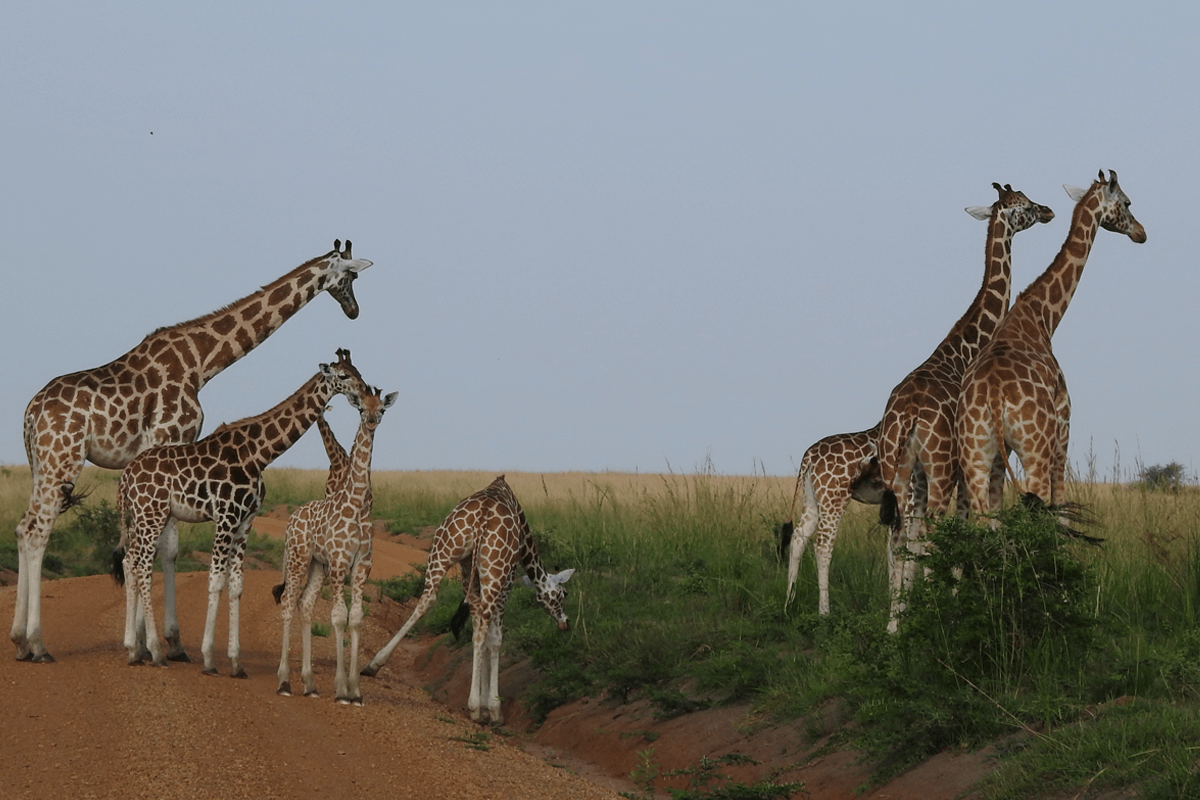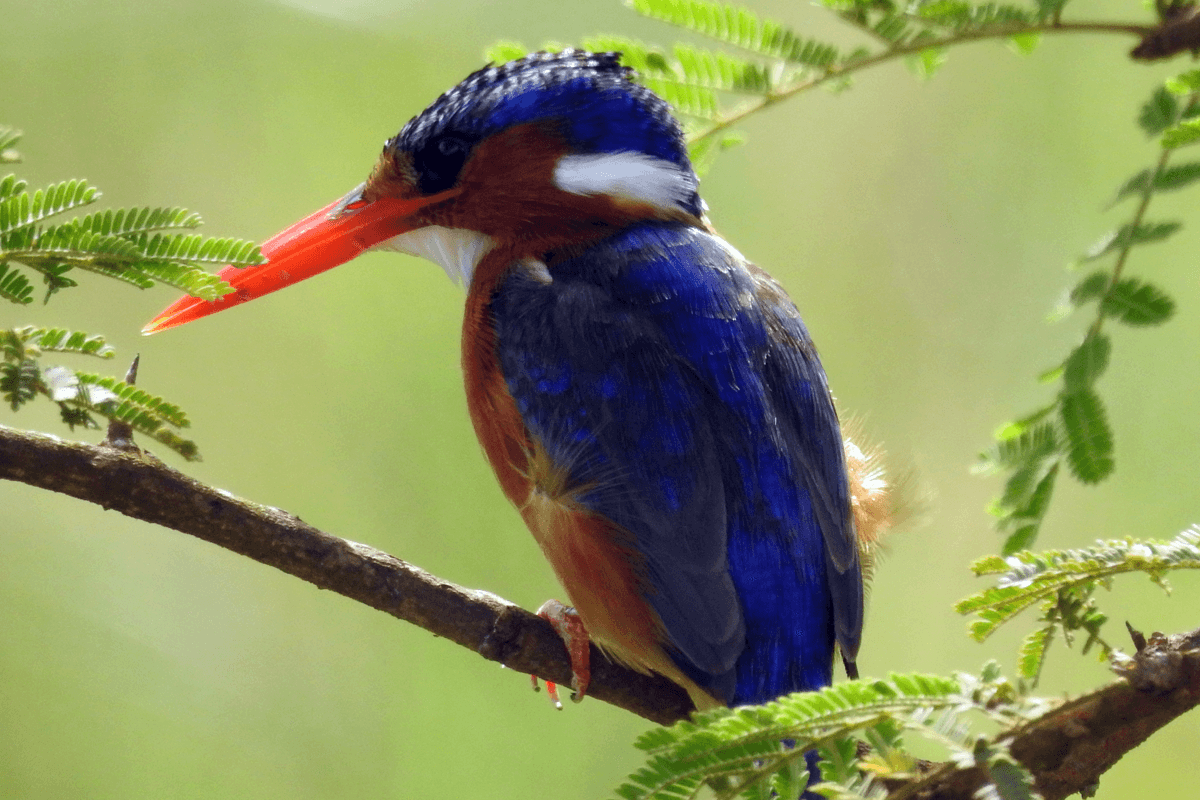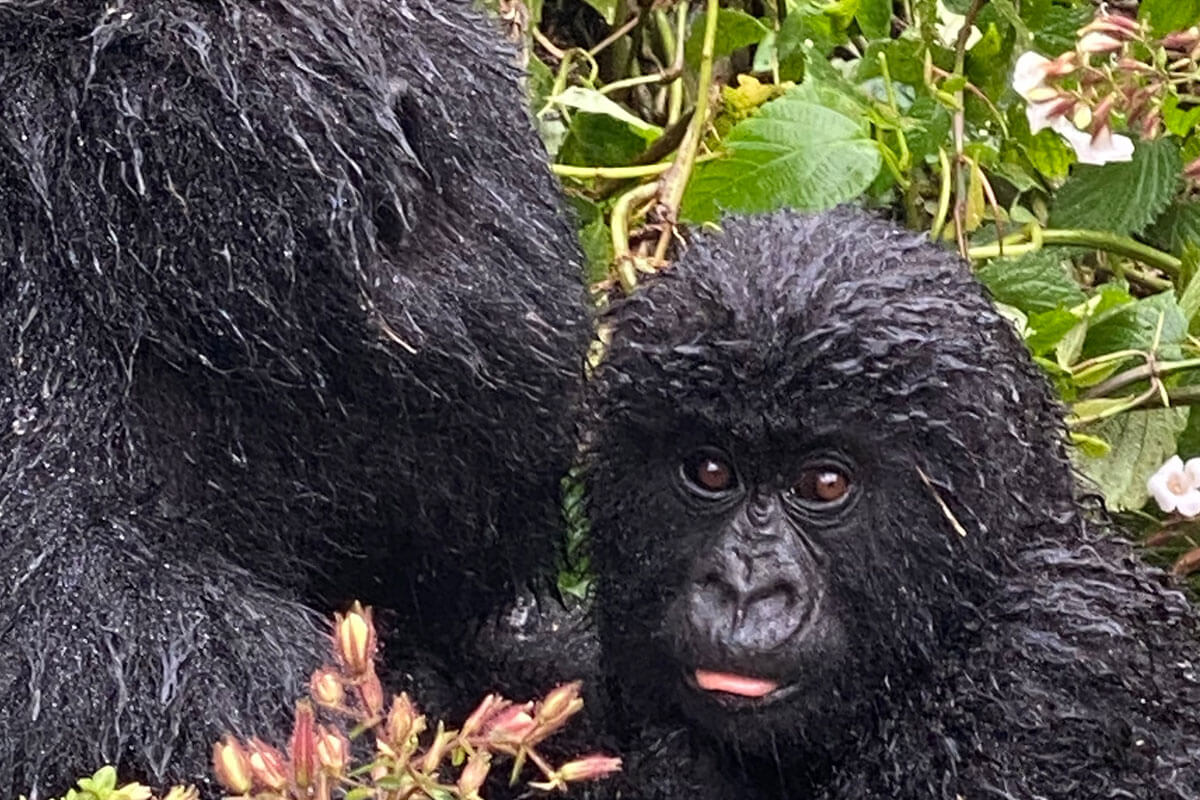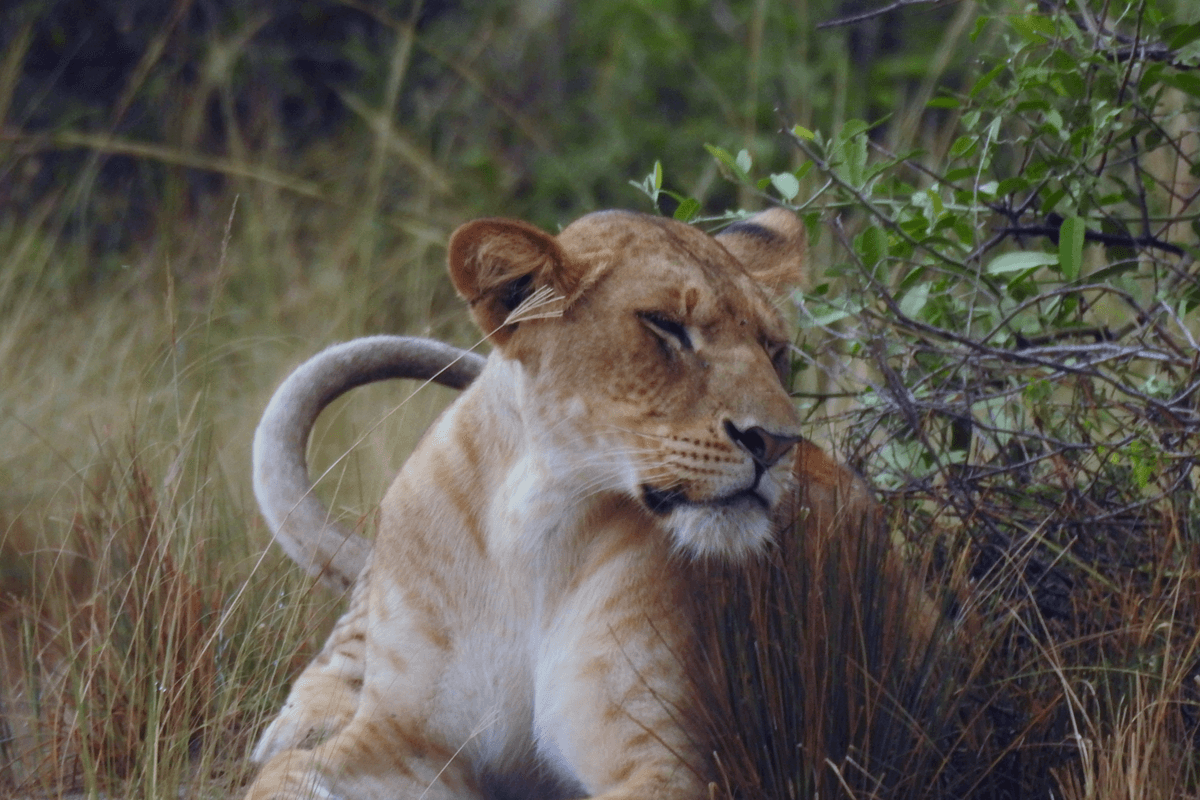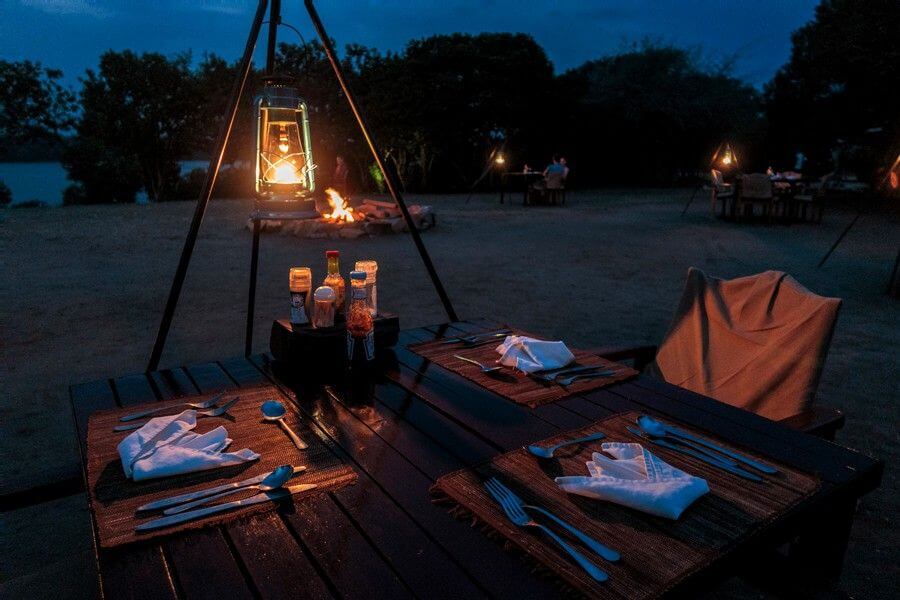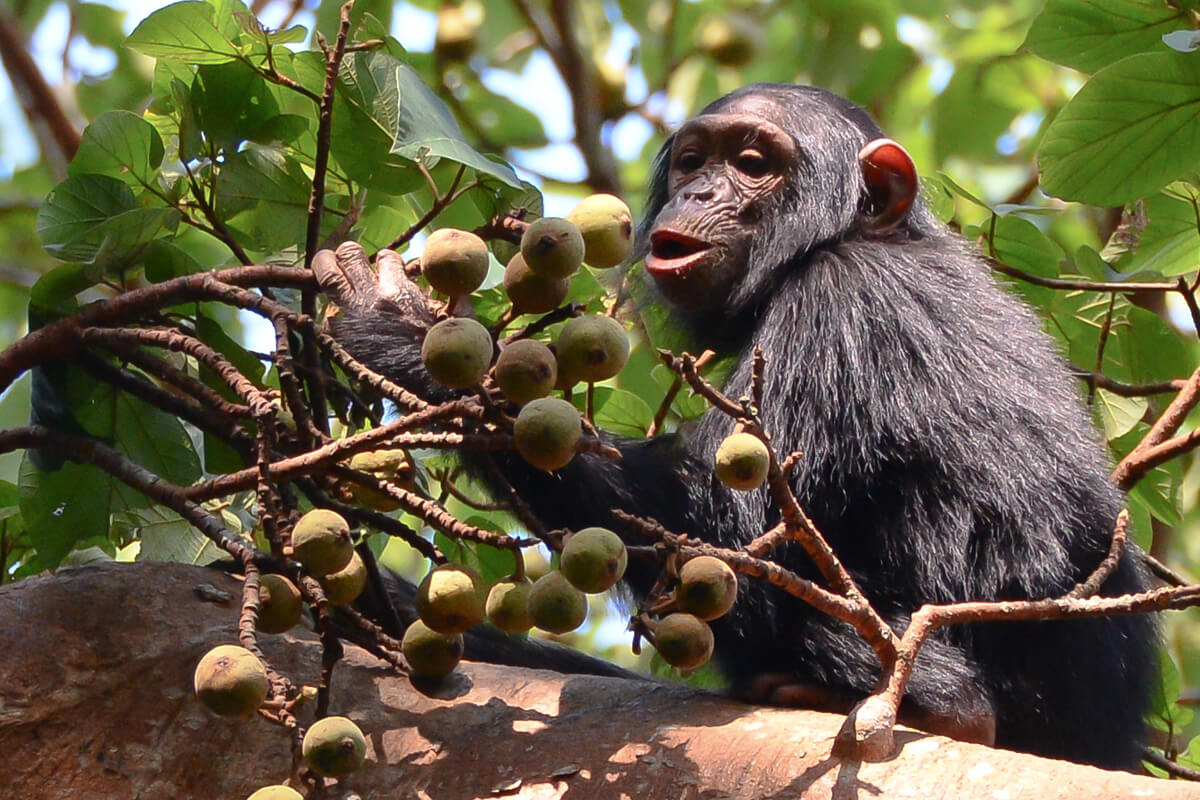Queen Elizabeth National Park stands as a testament to the untamed beauty of Uganda’s wilderness. This majestic park is home to more than 95 mammal species and 600+ bird species, inhabiting a vibrant tapestry of landscapes and ecosystems.
Imagine vast savannahs teeming with elephants, graceful antelopes, big cats, gangs of buffalos and schools of hippos – each moment presenting an authentic glimpse into the raw beauty of the wild.
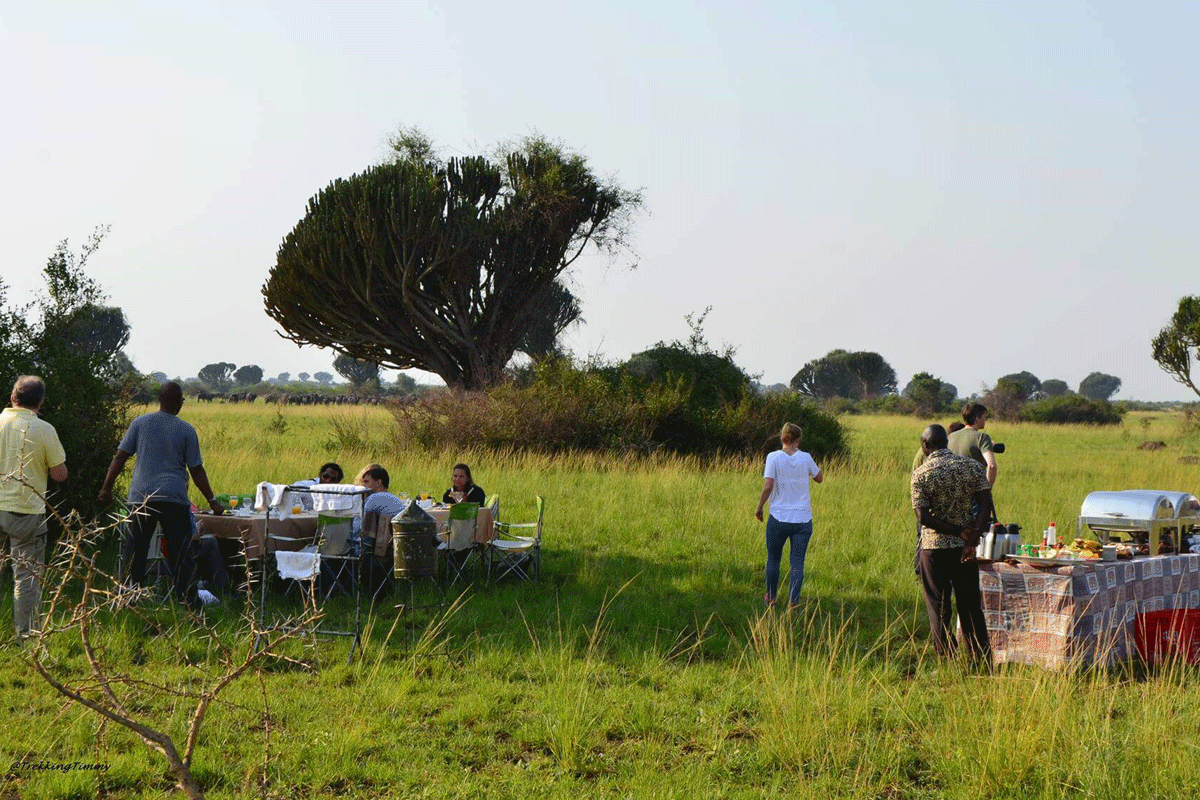 Yet, it’s not just the diverse wildlife that beckons. It’s the promise of immersive experiences – a leisurely boat ride on the Kazinga Channel revealing herds of hippos and elephants, treks through lush rainforests in search of playful chimpanzees, and cultural exchanges with local communities.
Queen Elizabeth National Park is an open invitation to embrace Uganda’s natural beauty, fostering moments that resonate with the pulse of the untamed wilderness, etching memories that endure beyond the journey itself.
Yet, it’s not just the diverse wildlife that beckons. It’s the promise of immersive experiences – a leisurely boat ride on the Kazinga Channel revealing herds of hippos and elephants, treks through lush rainforests in search of playful chimpanzees, and cultural exchanges with local communities.
Queen Elizabeth National Park is an open invitation to embrace Uganda’s natural beauty, fostering moments that resonate with the pulse of the untamed wilderness, etching memories that endure beyond the journey itself.
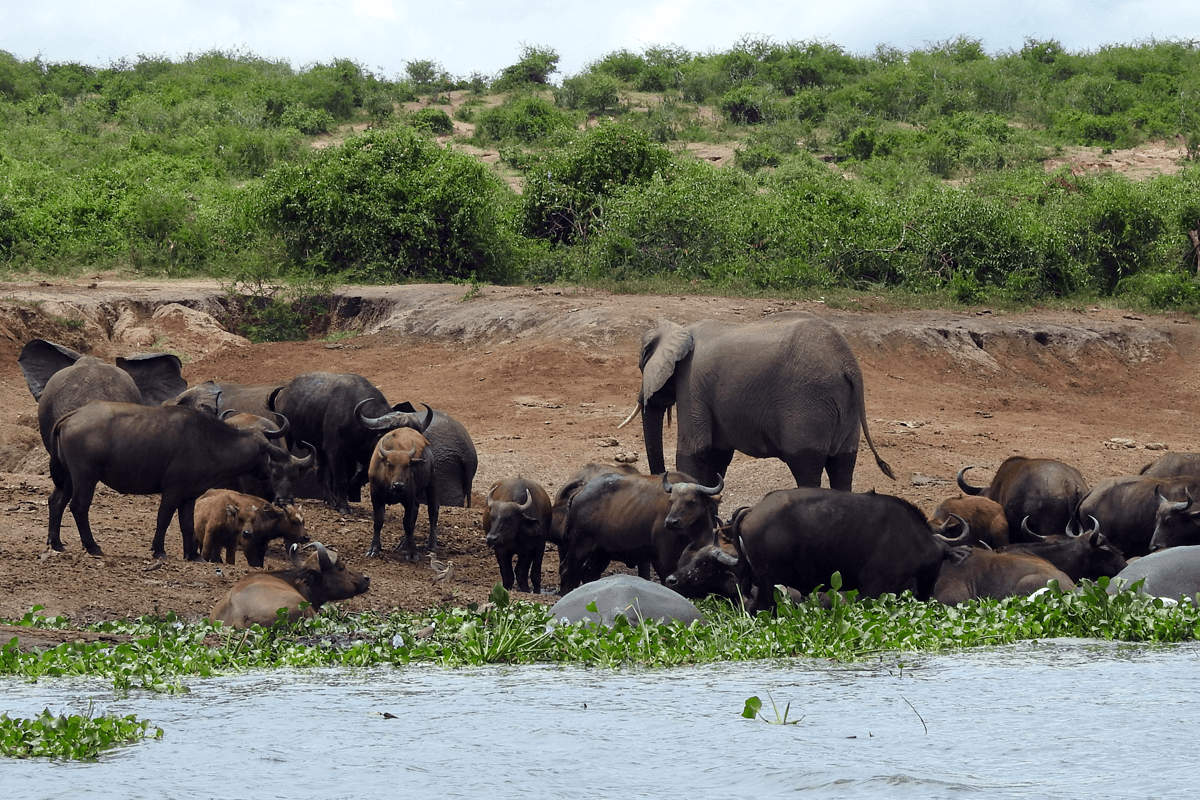
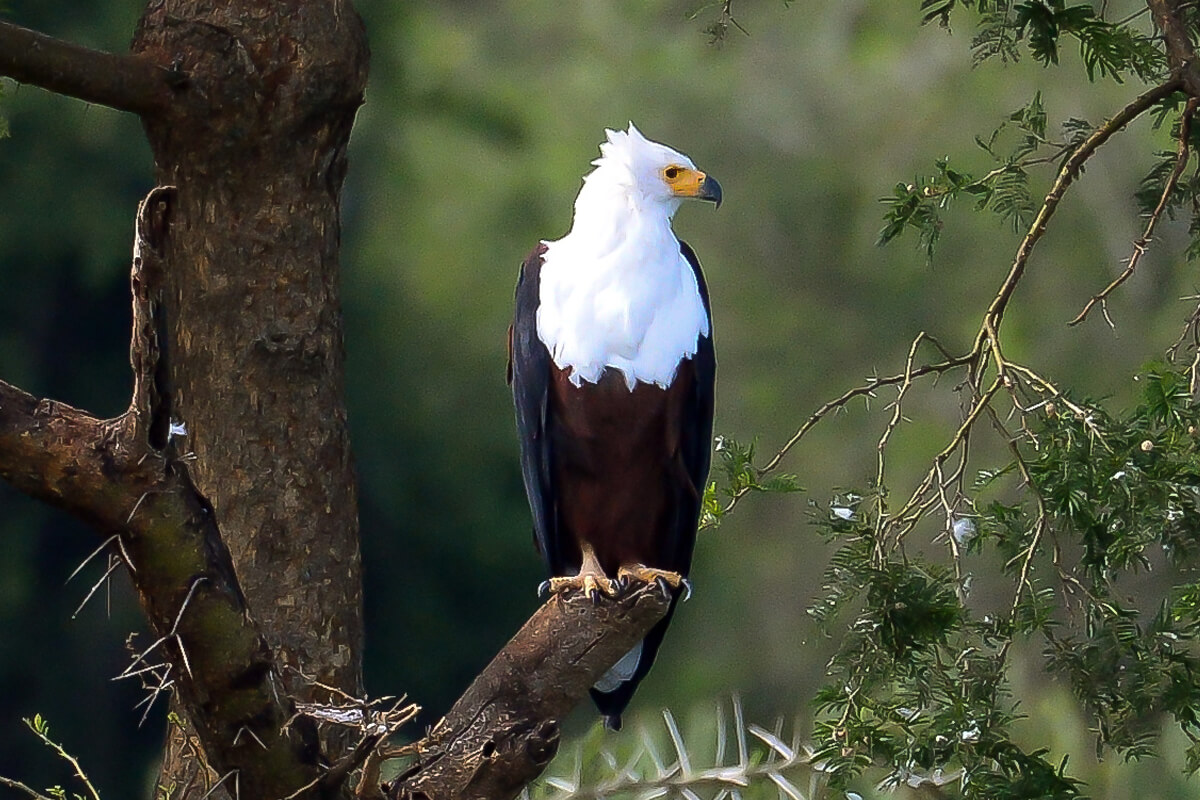 Go for birdwatching escapades across diverse habitats – savannahs, swamps and forests. From the Kazinga Channel, Kasenyi Plains to the Maramagambo Forest the birding trips offer glimpses of magnificent birds, including the majestic Martial Eagle and the elusive Shoebill Stork.
Seek out the melodious calls of endemic species and migratory birds that colour the skies, making this a paradise for birding enthusiasts.
Go for birdwatching escapades across diverse habitats – savannahs, swamps and forests. From the Kazinga Channel, Kasenyi Plains to the Maramagambo Forest the birding trips offer glimpses of magnificent birds, including the majestic Martial Eagle and the elusive Shoebill Stork.
Seek out the melodious calls of endemic species and migratory birds that colour the skies, making this a paradise for birding enthusiasts.
 Yet, it’s not just the diverse wildlife that beckons. It’s the promise of immersive experiences – a leisurely boat ride on the Kazinga Channel revealing herds of hippos and elephants, treks through lush rainforests in search of playful chimpanzees, and cultural exchanges with local communities.
Queen Elizabeth National Park is an open invitation to embrace Uganda’s natural beauty, fostering moments that resonate with the pulse of the untamed wilderness, etching memories that endure beyond the journey itself.
Yet, it’s not just the diverse wildlife that beckons. It’s the promise of immersive experiences – a leisurely boat ride on the Kazinga Channel revealing herds of hippos and elephants, treks through lush rainforests in search of playful chimpanzees, and cultural exchanges with local communities.
Queen Elizabeth National Park is an open invitation to embrace Uganda’s natural beauty, fostering moments that resonate with the pulse of the untamed wilderness, etching memories that endure beyond the journey itself.
Activities In The Park
1. Wildlife Game Drives
Immerse yourself in the park’s rich wildlife by venturing on game drives during the serene mornings or the enchanting dusk. Expert guides lead the way, ensuring memorable encounters with lions, leopards, elephants, hippos, buffalos, waterbuck, Uganda kobs and many more animals.
2. Launch Cruise
Board a boat for an exhilarating journey along the Kazinga Channel, an aquatic lifeline teeming with mesmerizing wildlife. Glide past pods of hippos lazily basking in the shallow waters, while elephants grace the shores. The voyage reveals an avian symphony with over 60 bird species, adding a colourful touch to this aquatic safari.3. Bird Watching
 Go for birdwatching escapades across diverse habitats – savannahs, swamps and forests. From the Kazinga Channel, Kasenyi Plains to the Maramagambo Forest the birding trips offer glimpses of magnificent birds, including the majestic Martial Eagle and the elusive Shoebill Stork.
Seek out the melodious calls of endemic species and migratory birds that colour the skies, making this a paradise for birding enthusiasts.
Go for birdwatching escapades across diverse habitats – savannahs, swamps and forests. From the Kazinga Channel, Kasenyi Plains to the Maramagambo Forest the birding trips offer glimpses of magnificent birds, including the majestic Martial Eagle and the elusive Shoebill Stork.
Seek out the melodious calls of endemic species and migratory birds that colour the skies, making this a paradise for birding enthusiasts.
4. Chimpanzee Tracking
The Kyambura Gorge splits the hot savannah of Queen Elizabeth with a trip of lowland rainforest so rich it inhabits chimpanzees and other primates in its canopies. Traverse dense rainforest is alive with vibrant birdlife, cherishing the echoes of primate calls that resonate through this enchanting landscape. Though chimp sightings aren’t guaranteed, the rich biodiversity of the Kyambura Gorge promises a memorable experience.5. Hiking and Nature Walks
Embark on invigorating hikes across the Mweya Peninsula or along the tranquil Ishasha River. These walks offer intimate encounters with diverse wildlife, such as antelopes, lions, buffalos, hippos and elephants among many others. The serene landscapes and proximity to nature create an immersive and unforgettable experience.6. Cultural Encounters
Engage in enriching cultural tours conducted in collaboration with local communities surrounding Queen Elizabeth NP. Gain insights into traditional village life, from vibrant dances to experiencing local cuisines. These initiatives not only offer a glimpse into authentic African culture but also contribute to community empowerment and conservation.Amenities
Queen Elizabeth National Park prides itself on offering visitors:- Airstrips: Accessible and convenient airstrips facilitate easy entry and exit from the park.
- Accommodation: Comfortable lodging and well-maintained camping areas, ensure a relaxed stay amidst nature’s beauty.
- Park Rangers: Knowledgeable and dedicated park rangers available for guided tours, providing valuable insights into the park’s ecosystems and wildlife.

